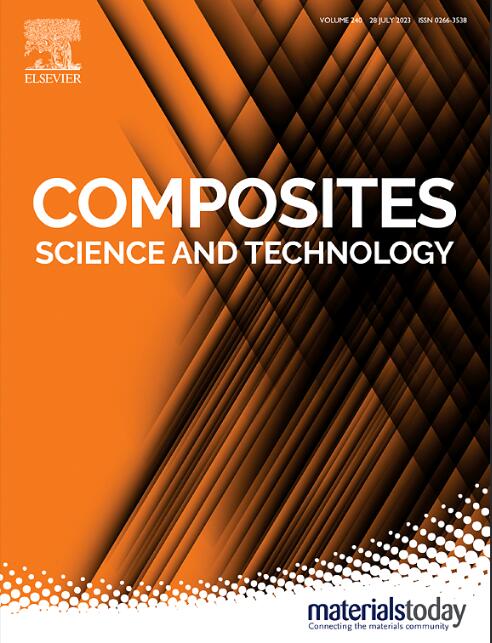透气和高灵敏度的自供电压力传感器,用于可穿戴电子设备和人机交互
IF 8.3
1区 材料科学
Q1 MATERIALS SCIENCE, COMPOSITES
引用次数: 0
摘要
自供电压力传感器因其在可穿戴电子产品、物联网(IoT)设备和人造电子皮肤方面的变革潜力而受到广泛关注。然而,在保持良好透气性的同时获得高灵敏度是一项艰巨的挑战。在这项研究中,我们利用摩擦电和静电感应原理设计了一种分层结构的全纳米纤维自供电压力传感器。该传感器采用静电纺丝工艺制成,由多层纳米纤维膜(NMs)组成:聚偏氟乙烯/石墨烯纳米膜为负摩擦层,乙基纤维素/聚乙烯醇吡啶酮纳米膜为正摩擦层,银纳米线负载的聚氨酯纳米膜为电极层。这种创新的全纳米纤维设计不仅确保了卓越的透气性,而且由于增强了表面粗糙度和放大了摩擦层的表面电荷电位,实现了出色的灵敏度(15.91 V/kPa)和低检测限(0.0044 N和1°)。该传感器通过准确监测各种人体动作和进行中英文双语字符识别,展示了其多功能性,突出了其在可穿戴电子产品、人机交互和下一代电子皮肤方面的巨大应用潜力。本文章由计算机程序翻译,如有差异,请以英文原文为准。

Breathable and highly sensitive self-powered pressure sensors for wearable electronics and human-machine interaction
Self-powered pressure sensors have gained significant attention for their transformative potential in wearable electronics, Internet of Things (IoT) devices, and artificial e-skins. However, attaining high sensitivity while maintaining good breathability has proven to be a formidable challenge. In this study, we design a hierarchically structured all-nanofiber self-powered pressure sensor utilizing the triboelectric and electrostatic induction principles. The sensor is fabricated via an electrospinning process and consists of a multi-layered architecture comprising nanofiber membranes (NMs): a polyvinylidene fluoride/graphene NM as the negative friction layer, an ethyl cellulose/polyvinyl polypyrrolidone NM as the positive friction layer, and silver nanowire-loaded polyurethane NMs as the electrode layers. This innovative all-nanofiber design not only ensures remarkable breathability but also achieves outstanding sensitivity (15.91 V/kPa) and low detection limits (0.0044 N and 1°), attributed to the enhanced surface roughness and amplified surface charge potential of the friction layer. The sensor demonstrates its versatility by accurately monitoring various human motions and performing dual-language character recognition (Chinese and English), highlighting its vast potential for applications in wearable electronics, human-machine interaction, and next-generation e-skins.
求助全文
通过发布文献求助,成功后即可免费获取论文全文。
去求助
来源期刊

Composites Science and Technology
工程技术-材料科学:复合
CiteScore
16.20
自引率
9.90%
发文量
611
审稿时长
33 days
期刊介绍:
Composites Science and Technology publishes refereed original articles on the fundamental and applied science of engineering composites. The focus of this journal is on polymeric matrix composites with reinforcements/fillers ranging from nano- to macro-scale. CSTE encourages manuscripts reporting unique, innovative contributions to the physics, chemistry, materials science and applied mechanics aspects of advanced composites.
Besides traditional fiber reinforced composites, novel composites with significant potential for engineering applications are encouraged.
 求助内容:
求助内容: 应助结果提醒方式:
应助结果提醒方式:


